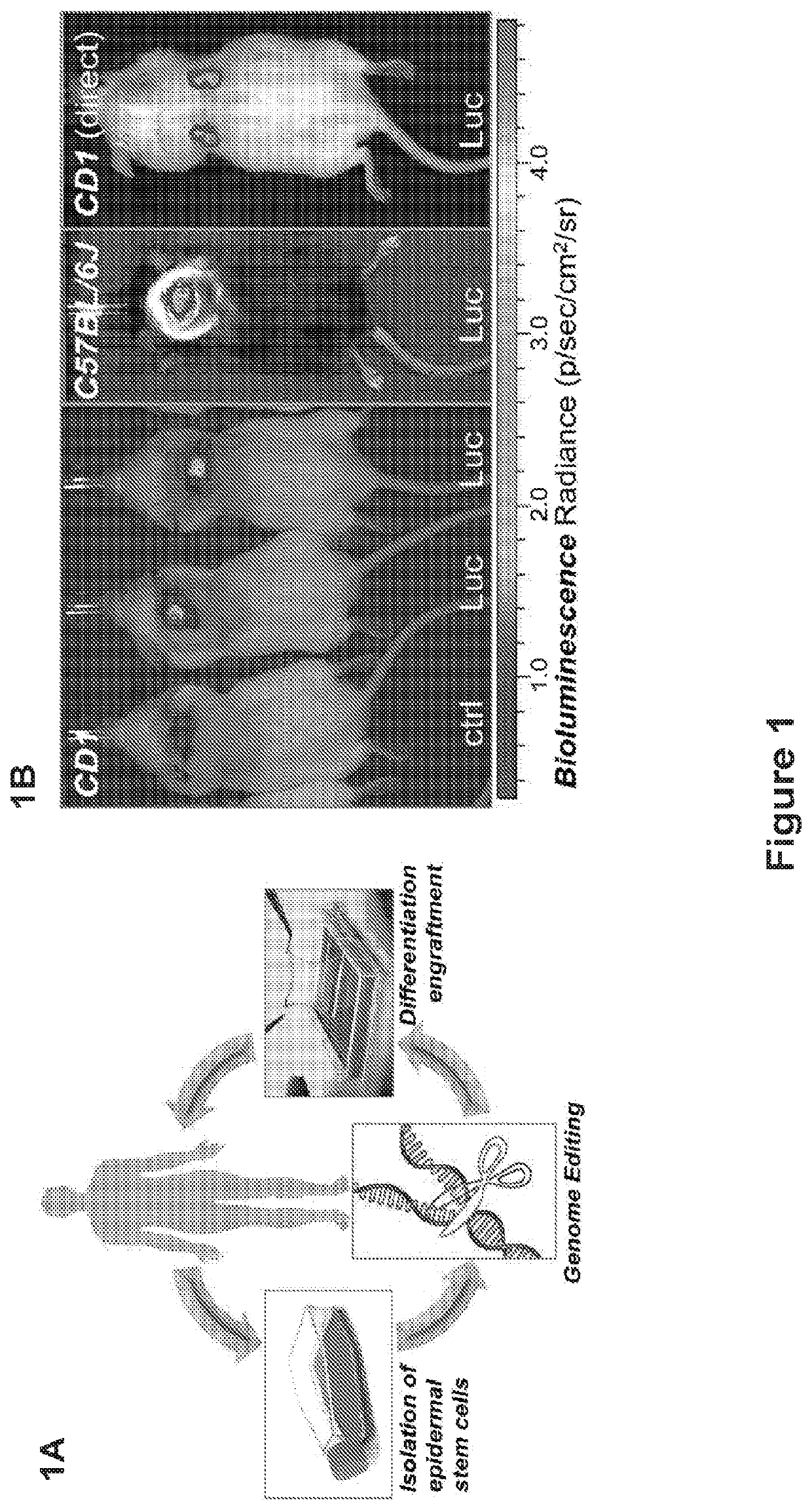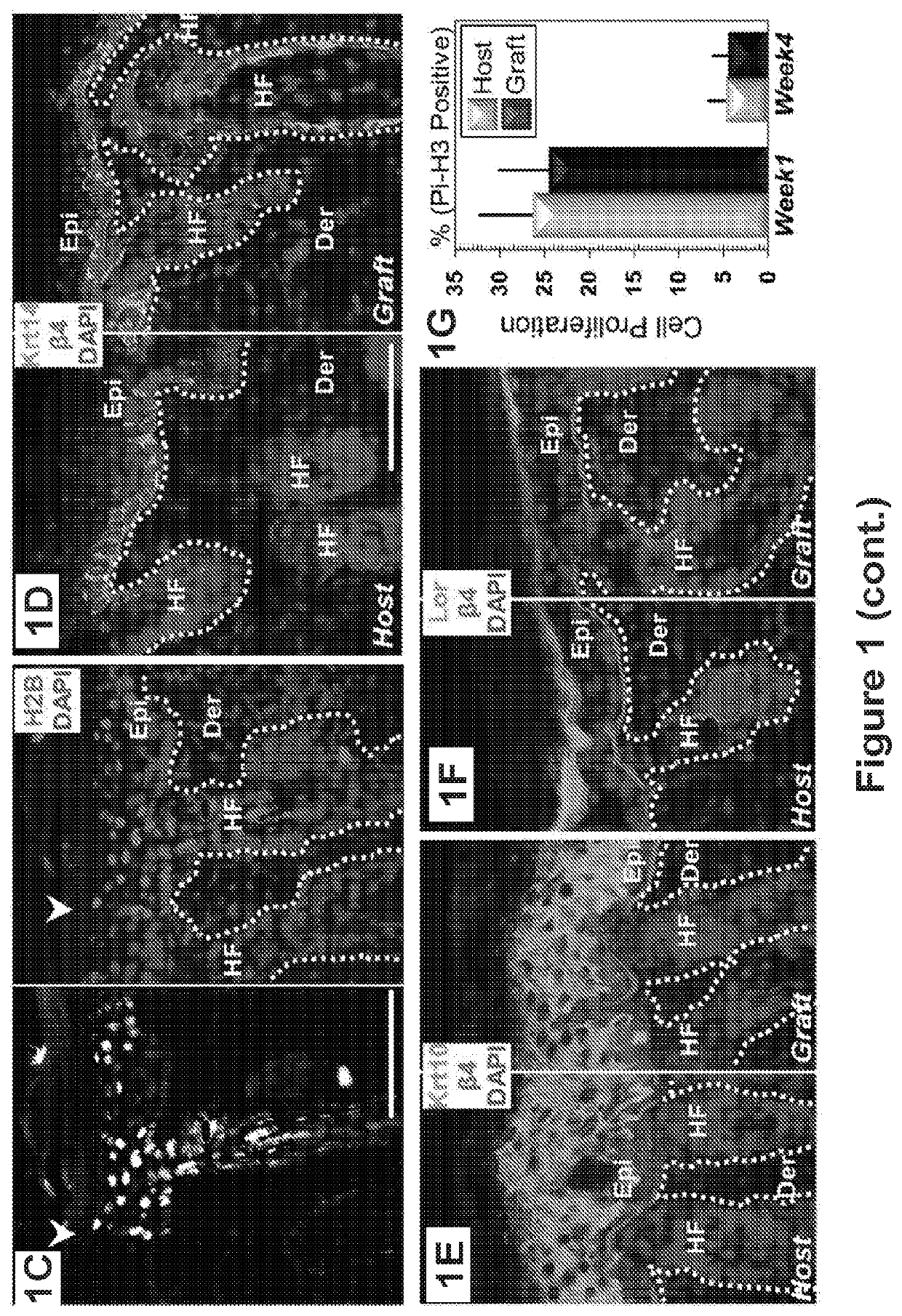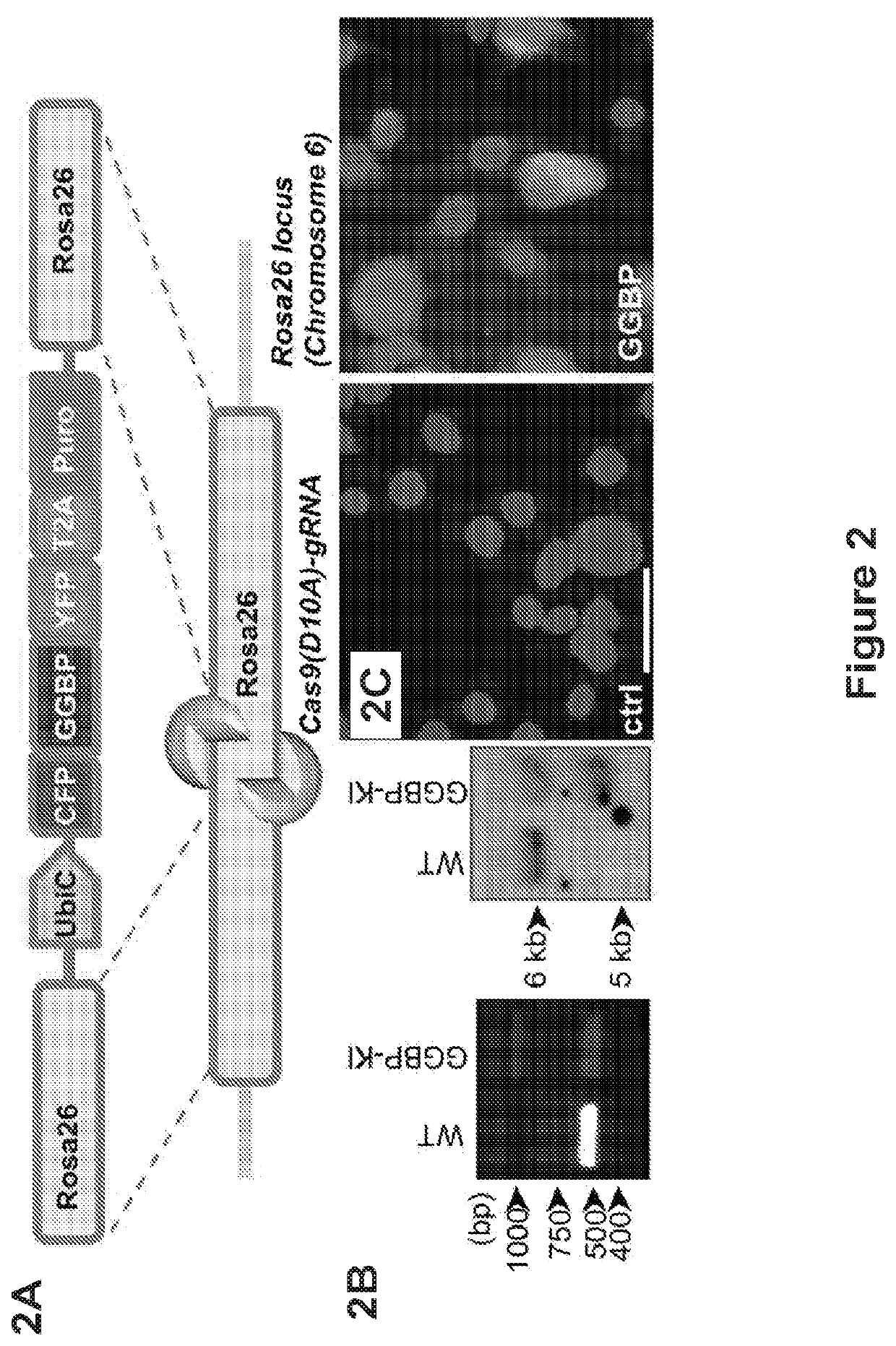Tissue organoids
- Summary
- Abstract
- Description
- Claims
- Application Information
AI Technical Summary
Benefits of technology
Problems solved by technology
Method used
Image
Examples
Example
[0204]Engraftment followed the procedures described in Example No. 2 above unless otherwise indicated below.
[0205]Cocaine-Induced Behaviors
[0206]For all behavioral experiments except where noted, C57BL / 6J mice were used. Roughly equal numbers of adult male and female mice were group-housed until surgery. Mice were maintained under controlled temperature and humidity conditions on a 12 h:12 h light:dark cycle (lights on at 7:00). Water and food were available ad libitum. Mice weighed around 25-30 g at the beginning of the experiments. All procedures followed National Institutes of Health Guide for the Care and Use of Laboratory Animal and were approved by the University of Chicago Institutional Animal Care and Use Committee.
[0207]Drug: Cocaine HCl and methamphetamine HCl (Sigma-Aldrich, Saint Louis, MO) were dissolved in sterile saline and delivered intraperitoneally at appropriates doses in a volume of 10 mL / kg. Ethanol (Sigma-Aldrich, Saint Louis, Mo., 95%, density=0.816) was prepa...
PUM
 Login to View More
Login to View More Abstract
Description
Claims
Application Information
 Login to View More
Login to View More - Generate Ideas
- Intellectual Property
- Life Sciences
- Materials
- Tech Scout
- Unparalleled Data Quality
- Higher Quality Content
- 60% Fewer Hallucinations
Browse by: Latest US Patents, China's latest patents, Technical Efficacy Thesaurus, Application Domain, Technology Topic, Popular Technical Reports.
© 2025 PatSnap. All rights reserved.Legal|Privacy policy|Modern Slavery Act Transparency Statement|Sitemap|About US| Contact US: help@patsnap.com



